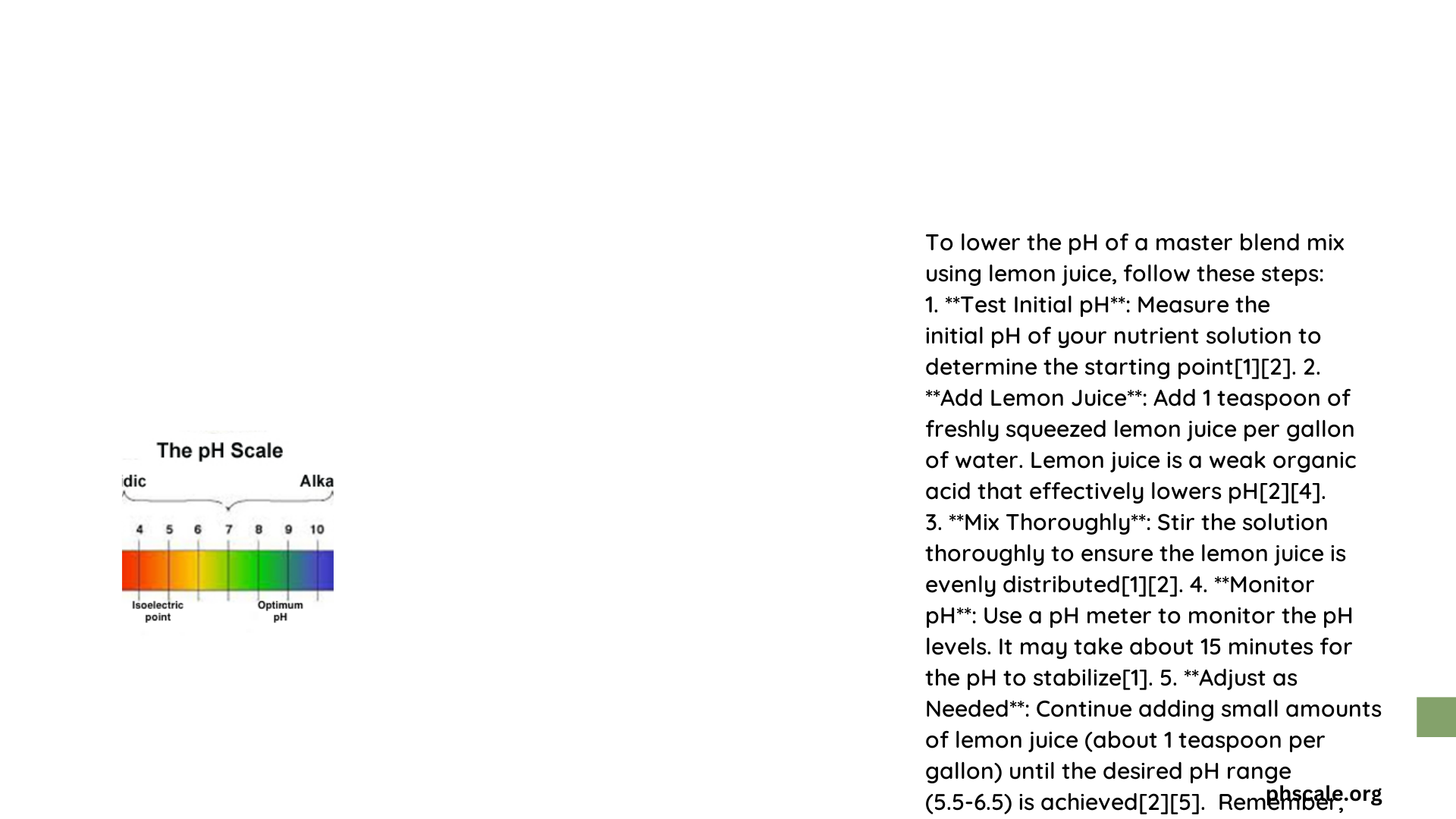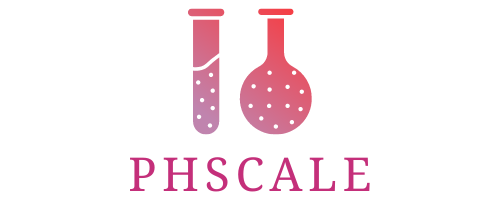Lowering the pH of MasterBlend hydroponic solutions with lemon juice is a natural and cost-effective method for maintaining optimal growing conditions. This guide explores the process of using lemon juice to adjust pH levels in MasterBlend solutions, including calculations, application techniques, and potential challenges. Understanding the science behind pH adjustment and the properties of lemon juice is crucial for successful hydroponic cultivation.
What is the pH of Lemon Juice?
Lemon juice is highly acidic, with a pH of approximately 2.0. This acidity makes it an effective option for lowering the pH of hydroponic solutions. The low pH of lemon juice is due to its high concentration of citric acid, which readily releases hydrogen ions (H+) when dissolved in water.
How Much Lemon Juice is Needed to Lower pH?

The amount of lemon juice required to adjust the pH of a MasterBlend solution depends on several factors, including the initial pH, the desired final pH, and the volume of the solution. Here’s a general guideline:
- For a 1-gallon (3.785 liters) solution:
- Two drops of pure lemon juice can lower the pH by about 0.5 units
- 7-15 drops can lower the pH by 0.5 units more precisely
For more accurate calculations, consider the following:
| Solution Volume | pH Reduction | Approximate Lemon Juice Required |
|---|---|---|
| 1 liter | 0.05-0.1 | 1 drop |
| 1 gallon | 0.5 | 7-15 drops |
| 1 gallon | 1.0 | 75-150 drops |
It’s important to note that these are estimates, and actual results may vary depending on the specific characteristics of your MasterBlend solution and the lemon juice used.
What are the Steps to Lower MasterBlend pH with Lemon Juice?
- Test the initial pH of your MasterBlend solution using a reliable pH meter.
- Determine the desired pH level for your hydroponic system (typically between 5.5 and 6.5 for most crops).
- Calculate the pH reduction needed based on the initial and desired pH levels.
- Measure out the appropriate amount of lemon juice using the guidelines provided above.
- Add the lemon juice to your MasterBlend solution gradually, stirring gently to ensure even distribution.
- Wait for a few minutes to allow the solution to stabilize.
- Retest the pH and make additional adjustments if necessary.
When is the Best Time to Adjust pH in Hydroponics?
The optimal timing for pH adjustment depends on various factors, including the growth stage of your plants and the specific requirements of your hydroponic system. Here are some general guidelines:
- Seedlings and Young Plants: Be cautious with pH adjustments, as young plants are more sensitive to changes. Make small, incremental adjustments and monitor closely.
- Vegetative Stage: Regular pH adjustments may be necessary as plants grow and nutrient uptake increases.
- Flowering Stage: Maintain stable pH levels to ensure proper nutrient absorption for optimal flower development.
- Before Nutrient Solution Changes: Adjust pH levels when preparing fresh nutrient solutions or topping off existing ones.
What are the Potential Challenges of Using Lemon Juice for pH Adjustment?
While lemon juice can be an effective pH adjuster, there are some challenges to consider:
- Inconsistent Acidity: The acidity of lemon juice can vary depending on factors such as ripeness and storage conditions.
- Risk of Overcorrection: Due to its high acidity, it’s easy to add too much lemon juice and lower the pH more than intended.
- Organic Matter Introduction: Lemon juice adds organic matter to the solution, which may promote algae growth or affect nutrient availability.
- Short-term Effect: The pH-lowering effect of lemon juice may be temporary, requiring more frequent adjustments.
- Potential Nutrient Interactions: The citric acid in lemon juice may interact with certain nutrients in the MasterBlend solution.
How Can You Monitor pH Levels Effectively?
Proper monitoring is crucial for maintaining optimal pH levels in your hydroponic system. Here are some effective monitoring techniques:
- Regular pH Testing: Use a calibrated pH meter to test your solution at least once daily.
- Keep a pH Log: Maintain a record of pH readings to track trends and identify potential issues.
- Use pH Indicator Strips: As a backup or quick check, pH indicator strips can provide a rough estimate of pH levels.
- Automated pH Monitoring: Consider investing in an automated pH monitoring system for larger or more complex hydroponic setups.
- Visual Plant Inspection: While not a direct pH measurement, observing your plants for signs of nutrient deficiencies or pH-related stress can indicate when adjustments are needed.
What are the Alternatives to Lemon Juice for pH Adjustment?
While lemon juice can be effective, there are other options for adjusting pH in hydroponic systems:
- Commercial pH Down Solutions: Specifically formulated for hydroponics, these provide more precise and consistent results.
- Phosphoric Acid: A common ingredient in commercial pH adjusters, it’s effective and doesn’t add unwanted nutrients.
- Citric Acid: A purified form of the acid found in lemon juice, available in powder form for more accurate dosing.
- Vinegar: Another natural option, though it may introduce unwanted organic matter to the system.
- Sulfuric Acid: Highly effective but requires careful handling due to its corrosive nature.
How Does pH Affect Nutrient Availability in Hydroponics?
Understanding the relationship between pH and nutrient availability is crucial for successful hydroponic cultivation:
- Optimal pH Range: Most hydroponic crops thrive in a pH range of 5.5 to 6.5.
- Nutrient Lockout: pH levels outside the optimal range can cause nutrient lockout, preventing plants from absorbing essential elements.
- Micronutrient Availability: Iron, manganese, and zinc become less available at higher pH levels.
- Macronutrient Absorption: Nitrogen, phosphorus, and potassium absorption can be affected by pH fluctuations.
Here’s a simplified table showing nutrient availability at different pH levels:
| pH Level | Nutrient Availability |
|---|---|
| Below 5.5 | Reduced availability of calcium and magnesium |
| 5.5 – 6.5 | Optimal range for most nutrients |
| Above 6.5 | Reduced availability of iron, manganese, and zinc |
What Precautions Should You Take When Using Lemon Juice in Hydroponics?
When using lemon juice to lower the pH of your MasterBlend solution, keep these precautions in mind:
- Start Small: Begin with small amounts of lemon juice and adjust gradually to avoid overcorrection.
- Use Fresh Lemon Juice: Ensure the lemon juice is fresh and free from additives or preservatives.
- Strain the Juice: Remove pulp and seeds to prevent clogging in your hydroponic system.
- Monitor Closely: Check pH levels frequently after adding lemon juice, as the effects may not be immediate or long-lasting.
- Consider Nutrient Interactions: Be aware that the citric acid in lemon juice may interact with certain nutrients in your solution.
- Maintain Cleanliness: Clean all equipment thoroughly to prevent contamination and bacterial growth.
By following these guidelines and understanding the principles behind pH adjustment, you can effectively use lemon juice to lower the pH of your MasterBlend hydroponic solution, promoting healthy plant growth and optimal nutrient uptake.
References:
1. https://practicalgrowing.com/uncategorized/can-you-lower-the-ph-in-hydroponics-with-lime-or-lemon-juice/
2. https://atlas-scientific.com/blog/adjusting-ph-in-hydroponics/
3. https://www.420magazine.com/community/threads/can-i-use-lemon-juice-to-lower-the-ph-of-my-soil.98106/
